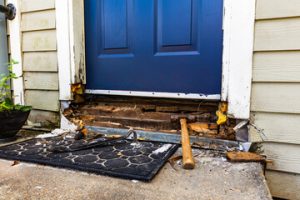Landscapes transform properties to make them more comfortable, enjoyable and potentially increase their value. From a simple lawn to an intricate arrangement of flower beds, pathways and outdoor living spaces, the possibilities are endless!

Choosing regionally native plants can lower maintenance costs by requiring less water, fertilizer and pesticides. Also, incorporating natural and sustainable features like water catchment systems can reduce your carbon footprint. Visit https://oceaniclandscaping.com/ to learn more.
While many people focus on the functionality of landscaping, it can also enhance a property’s aesthetic. This can be done through color, texture, and form. For example, incorporating a variety of colors can make a garden more vibrant and appealing. Different colors have different effects on the mind, and a well-designed color palette can create a balanced landscape. Using contrasting textures can also add interest to a yard. For example, incorporating grass, wood, and concrete can add contrast to the landscape.
Aesthetics can be considered a fundamental aspect of landscape design, and the concepts behind it are applicable to a wide range of projects. Unlike other forms of art, such as music, sculpture, and paintings, landscape architecture has a more direct connection to human emotions and philosophy. It starts with the desired objectives and aims to identify and create pleasurable human emotions, and then fashions and builds the landscape accordingly. This is in contrast to the conventional landscape design process, which begins not with emotions and philosophy but with features — and is thus materially driven.
The concept of landscape aesthetics has evolved over time, and it continues to change under the influence of various ideological trends and technological developments. As a result, the research field has been split into several theoretical branches, which differ in their scope and connotation. For example, some branch focuses on the logical and conceptual framework of landscape aesthetics while others discuss specific topics such as ethics, morality, political constitutions, gardens, and paintings.
In addition to aesthetics, the landscape must be functional and serve a purpose. A landscape that has both beauty and function is a win-win for both the homeowner and the environment. For example, a beautiful garden can enhance the beauty of a home while providing a place for family and friends to gather.
Aesthetics are a crucial part of the landscaping process, and a well-designed landscape can enhance the value of a property. However, not all homes need to be transformed into a work of art. Even small changes can have a big impact on the value of a property, and can even increase the curb appeal of a neighborhood.
Entertainment
A well-designed yard is more than just a green space – it’s a dynamic entertainment hub. Spending time in your landscape amidst nature’s beauty has been proven to lower stress levels, reduce anxiety and depression and boost overall mood. With a little help from your landscaping professional, you can design areas for dining, lounging, cooking, or play to bring everyone together in a vibrant social setting. Hardscaping elements like patios, grill stations and fire pits provide the foundation for these spaces, while plants add color, texture and variety.
A professionally designed and maintained landscape will not only make your home more appealing, it will also increase your property value.
Health
Landscaping is often seen as a decorative enhancement to your home or business, but it’s more than just a way to add beauty. A well-designed landscape provides many health benefits, including boosting your immune system, improving mental and physical health, and encouraging social connections.
The color, scents, and textures of greenery and flowers are known to enhance mood and promote happiness. They also help reduce stress and anxiety by lowering cortisol levels.
Gardening and other outdoor activities can also be a great source of exercise. Digging, raking, mowing, trimming hedges, and weeding are all low-impact exercises that can improve your overall strength and flexibility. In addition, landscaping can help you eat healthier by providing fresh fruits and vegetables right outside your door.
Adding trees and other plants to your property can improve air quality by removing carbon dioxide and releasing oxygen. Plants and lawns also provide shade, reducing the urban heat island effect and making cities feel cooler. Choosing pollinator-friendly and native plants will also support local ecosystems.
Landscapes can also make your home or business more energy-efficient by reducing cooling costs in the summer and heating costs in the winter. The use of natural materials, such as wood, stone, and clay in your landscape design can also help reduce waste by minimizing the need for chemicals and artificial substances.
Investing in a quality landscape can also increase the value of your home or business and contribute to a healthy, sustainable environment. Landscaping professionals can evaluate your site and recommend ways to maximize sustainability, such as reducing water usage by replacing water-intensive turf with native plants or designing a rain garden that captures runoff and uses it to nourish the soil and surrounding vegetation.
A beautifully designed landscape can serve as a sanctuary away from the demands of everyday life, offering a place to relax and unwind. The process of planning and executing a landscaping project can also be therapeutic, helping you to gain a sense of accomplishment and achievement. In addition, gardens and other green spaces can encourage social connections, as they provide a space for friends and family to gather and enjoy each other’s company.
Value
Homeowners are always looking for ways to increase their property value, and landscaping can be a cost-effective way to do so. In fact, according to research by Virginia Tech, homes with well-designed and maintained yards sell for more money than those without landscaping. Moreover, landscaping offers a variety of benefits for homeowners, from improving their quality of life to lowering energy costs.
Landscaping involves creating a pleasing outdoor environment by using trees, plants, flowers, and grass. The process can also include the construction of outdoor structures like patios and walkways. This practice is usually done to beautify a property, increase its value, and provide people with a comfortable space to relax or play.
There are two main types of landscaping: hardscaping and softscaping. Hardscaping refers to any paved areas, such as driveways, sidewalks, and patios, while softscaping refers to the greenery on a property. Some examples of softscaping elements are mulch, flower beds, and garden paths.
Softscaping adds color and texture to the yard and can help control erosion and weeds. It can also increase the privacy of a home and improve its air quality by reducing pollution. Additionally, it can create a cooling effect on a house by blocking out wind and shade from nearby buildings.
In addition to the aesthetic and environmental benefits, landscapes can also add value to a property by increasing its curb appeal. For example, a beautiful front lawn with attractively planted shrubs and trees can make a positive first impression on potential homebuyers. Furthermore, it can help distinguish a home in a neighborhood with similar houses by providing an appealing visual contrast.
While many homeowners think of home improvements as being an investment, not all projects offer the same return on investment. However, professional landscaping can greatly increase the value of a home, especially in competitive markets. In fact, it is one of the few home improvement projects that can yield a high return on investment.
If you’re considering upgrading your landscaping, consider hiring a professional to design and install the project. They’ll know what plants and trees will thrive in the area, and they can help you get the most out of your investment. Plus, they’ll ensure that the work meets local codes and regulations.



